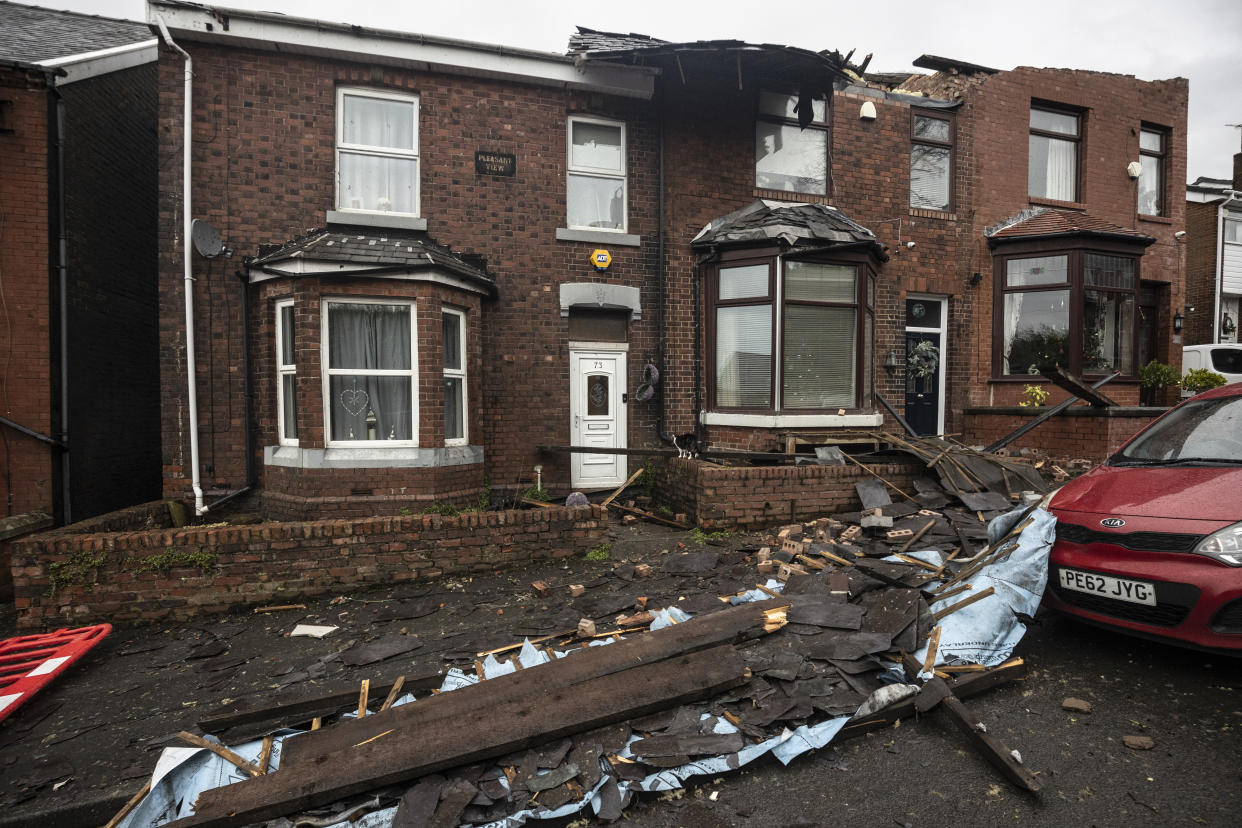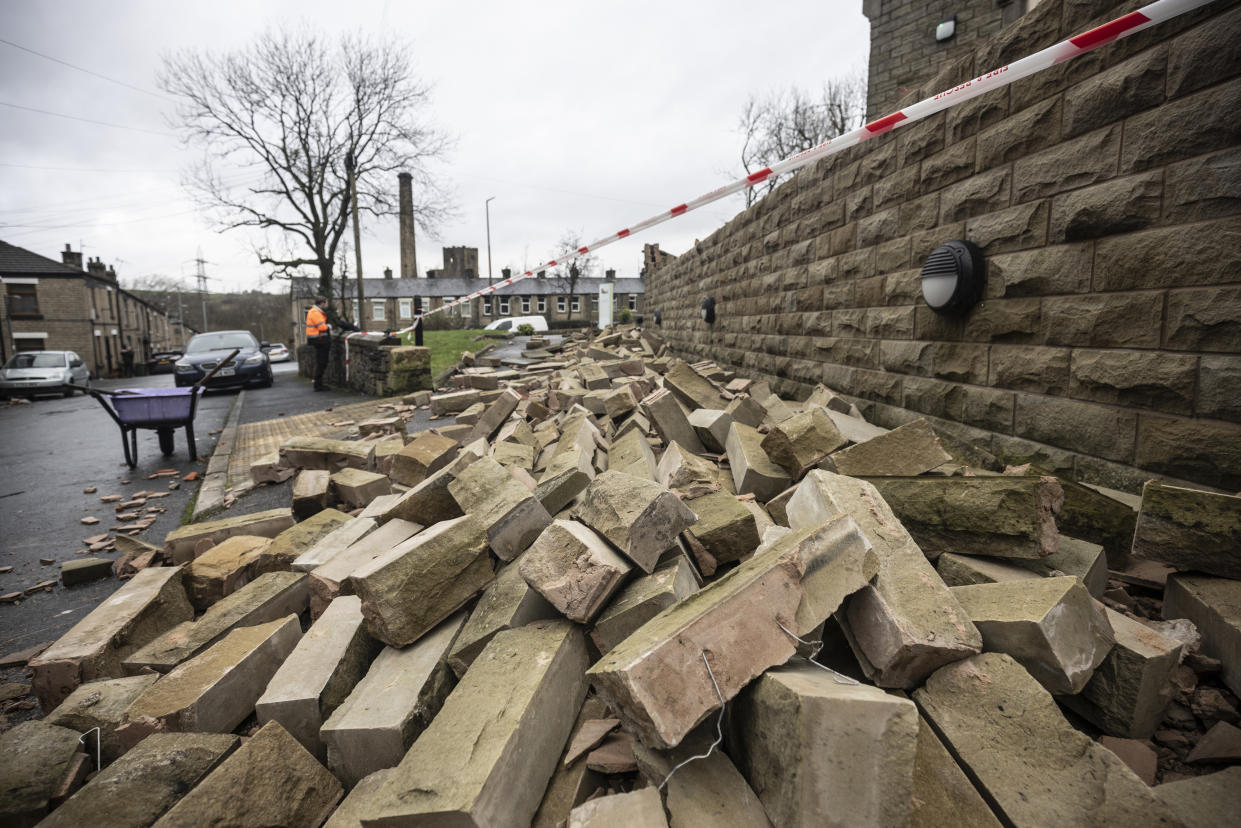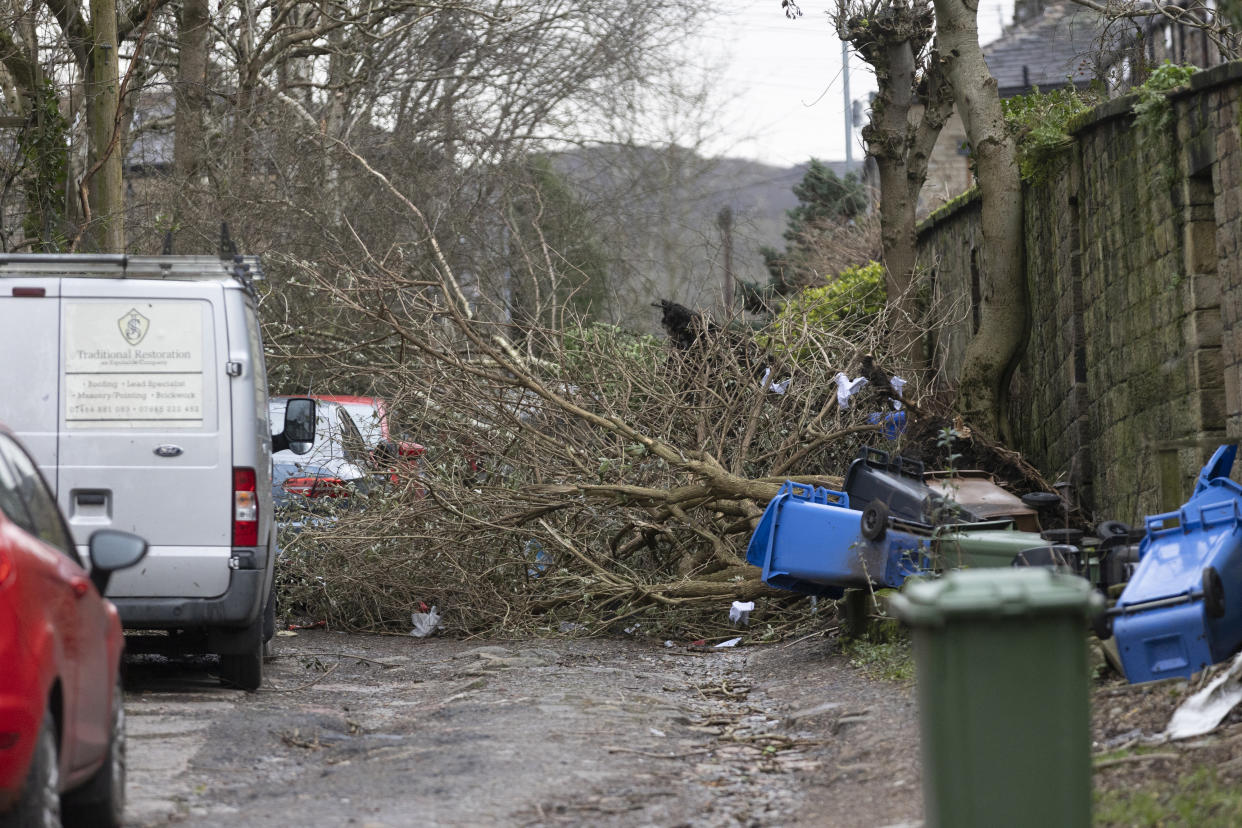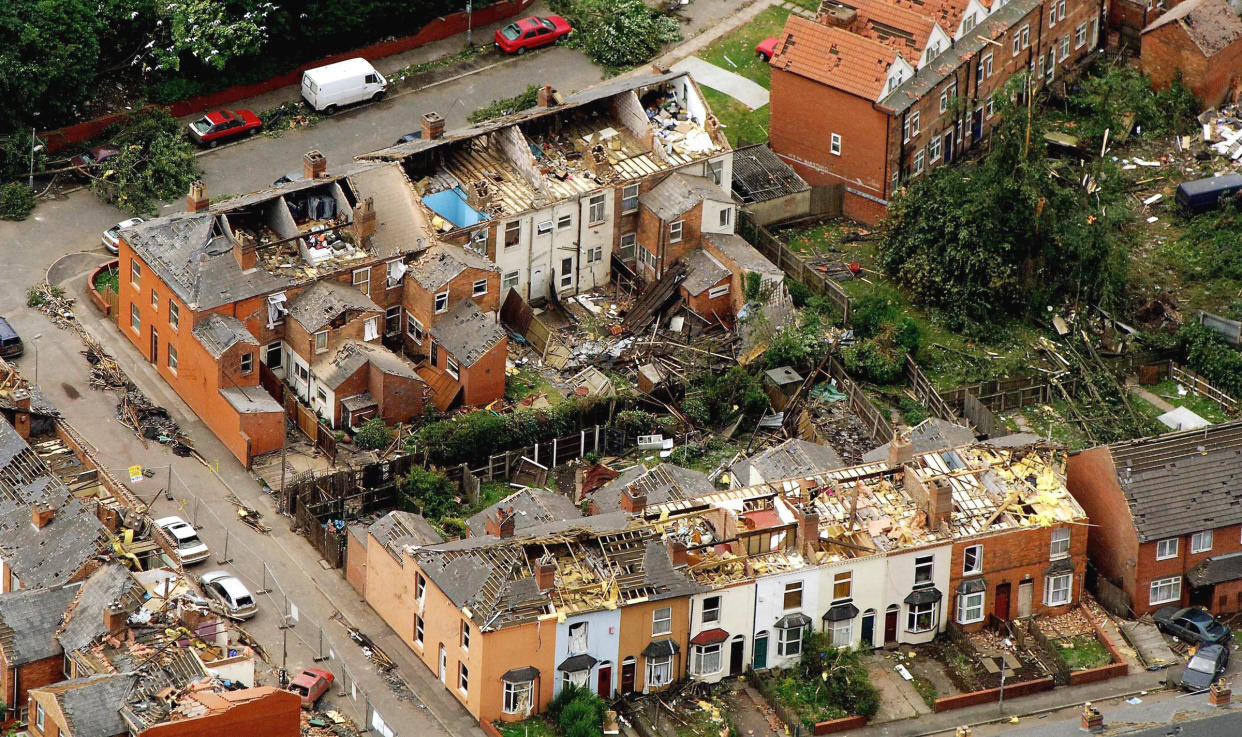What causes a tornado and when was the last one in the UK?

Properties were left damaged and people forced to leave their homes after a "localised tornado" passed over Greater Manchester during Storm Gerrit on Wednesday.
Greater Manchester Police said it received "numerous reports" about the 'tornado' at around 11.45pm in Stalybridge, Tameside on Wednesday, declaring a major incident due to the "severity" of the damage caused and the potential risk to public safety.
No injuries were reported but many residents were forced to leave their homes, with those whose properties had suffered significant damage urged not to return until they had been given the all-clear by structural engineers.
Chief Superintendent Mark Dexter, from Greater Manchester Police (GMP), said: "This incident has undoubtedly affected numerous people in the Stalybridge area with many residents displaced from their properties during the night. Our highest priority is keeping people safe which is why we are advising those who have been displaced not to return or enter their properties which have significant damage until they have been assessed by structural engineers.

Last night a supercell thunderstorm crossed Greater Manchester causing damage.
We know from our Dopplar radar that it had a strong rotating updraft. Whilst we don't yet have surface data to confirm, the presence of these features suggests a tornado at the surface was likely 🌪️ pic.twitter.com/XEG1TkKbjN— Met Office (@metoffice) December 28, 2023
The Tornado and Storm Research Organisation said a detailed site investigation would need to be undertaken before it can confirm the damage was caused by a tornado.
The Met Office said a supercell thunderstorm – which can cause a tornado – had crossed Greater Manchester on Wednesday night with a "strong rotating updraft". A spokesperson said: "Damage reported from the area would be consistent with a small-scale tornado and radars picked up a feature that could be a tornado. The meteorological conditions in the area also support the possible development of a tornado in the area. Around 30 tornados are reported a year in the UK, though they often occur where there are little to no impacts or are very short-lived features."
Recommended reading
Tornadoes in the UK are surprisingly common and no one knows why(The Conversation)
Rare tornado-like phenomenon spotted over Suffolk (East Anglian Daily Times)
UK weather: Tornado damages homes and cars in Surrey (Sky News)
What is a tornado and what causes one?
Tornadoes are vertical funnels of rapidly spinning air. They often come from supercells - large thunderstorms with winds that are already in rotation. According to National Geographic, around one in a thousand storms becomes a supercell, and one in five or six supercells spawns off a tornado.
A tornado forms when warm, humid air collides with cold, dry air. The denser cold air is pushed over the warm air, usually producing thunderstorms. The warm air rises through the colder air, causing an updraft.
If winds vary sharply in speed or direction, that updraft starts to rotate, called a mesocycle. As that mesocycle draws in more warm air from the moving thunderstorm, its rotation speed increases and water droplets from its moist air form a funnel cloud which continues to grow and eventually drops down from the cloud to touch the ground - at which point it becomes classified as a tornado.

The tornado then moves across the surface causing severe damage or destruction to objects in its path. Tornado size and intensity vary greatly, the Met Office says, with a typical tornado 20-100m wide at the surface, lastings for a few minutes and with a track of around a mile (1.6km). Tornado damage is localised; limited by the track of the tornado.
Around 30 tornadoes a year are reported in the UK, according to the Met Office, which are typically small and short-lived, but can cause structural damage if they pass over built-up areas.
When was the last tornado in the UK?
Tornadoes are tracked by the Tornado and Storm Research Organisation (TORRO), which categorises them using a scale measuring their intensity based on wind speed, track length, track width and track area.

The most recent tornado in the UK was in Birmingham in July 2005, measuring T6 on the TORRO scale, causing £40m of damage - reportedly the costliest tornado if not the strongest. A tornado that hit Gunnersbury in London in 1954 was stronger, measuring T7 on the scale.
Accoridng to TORRO, the most intense tornado on record for the UK was in 1666 when a tornado passed through Lincolnshire, measuring T8-9 with a reported maximum track width of 200m and a track length of 5km.


